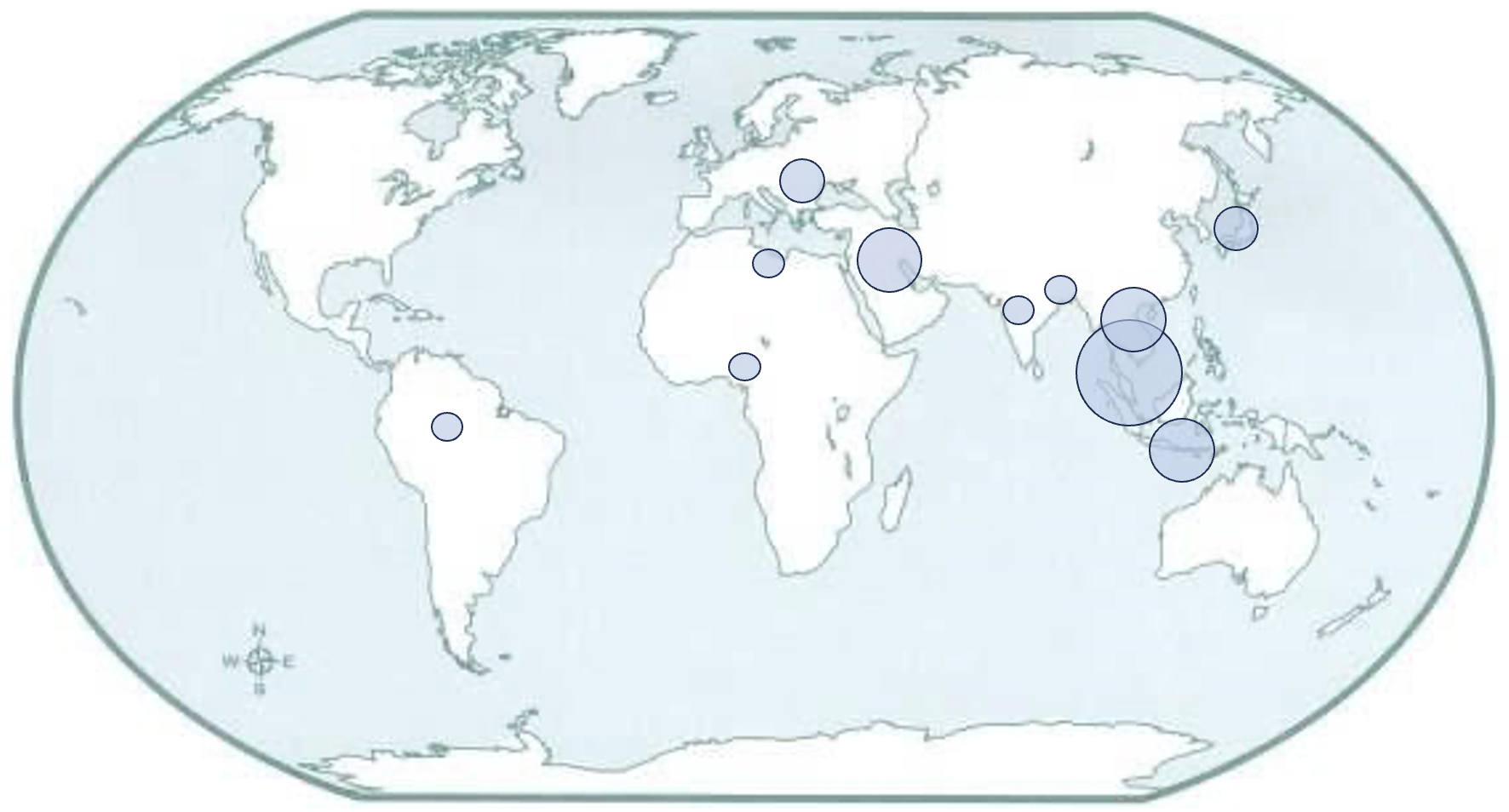Marine Macro- and Micro Plastic Litter on Beach Sediment of Northern Peninsular Malaysia
DOI:
https://doi.org/10.37934/armne.16.1.114123Keywords:
Coastal pollution, macroplastic, marine litter, microplastic, plastic, large and small relationshipAbstract
This paper investigates the spatial distribution of small plastic litter on the beach of Kuala Perlis and Pulau Langkawi in the northern region of Peninsular Malaysia. The objectives are to ascertain the categories of macro marine litter and macroplastic types, the amount of microplastic in the sediment layer, and the relationship between macroplastic and microplastic. Macro marine litter was collected in 100-meter transects at six different locations. Sediment samples for microplastic identification were collected using a quadrat measuring 0.5 m × 0.5 m with a depth of 0.05 m. Plastic accounts up most of the macro marine litter collected (73.8%), followed by glass (12%), fabric (7.8%), rubber (4.4%), wood (2%), and metal (0.07%). Between 2018 and 2020, the overall weight of macroplastic (>5 mm) litter and the amount of microplastic (<5 mm) litter on northern beaches were 80.371 g/m2 and 11.094 g/m3, respectively. In this investigation, macroplastic collected on the beach surface ranged from 0.02 g to 14.09 g/m2, while microplastic in the beach sediment ranged from 0 to 1.192 g/m3. The packaging category seems to have the highest percentage of collected macroplastic. At the 95% confidence level, the calculated R2 of 0.7444 indicates a substantial association between macroplastic and microplastic. The linear regression equation is y = 0.1927x + 0.0226, with y representing microplastic (g/m3) and x being macroplastic (g/m2). This strong link demonstrates that the presence of microplastic in sediment is strongly related to the abundance of macroplastic on the beach. This finding provides a good approximation of actual microplastic occurrence to macroplastic abundance, which will be useful in environmental evaluation and management approaches.









